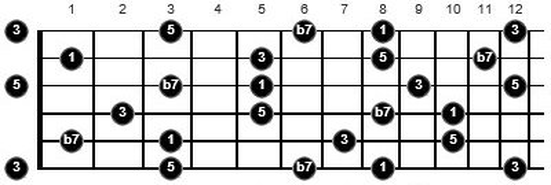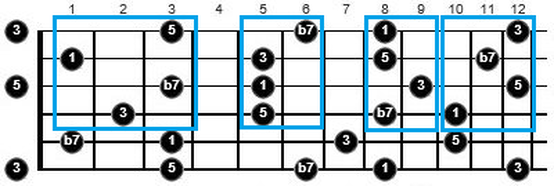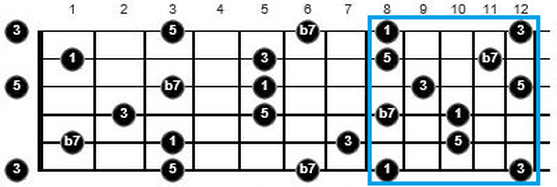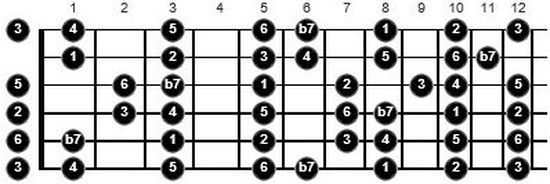For the most part I taught myself to play guitar. I spent a year at Music College and had a teacher for the year or so prior to going there, which accounts for less than 20% of the time I’ve been playing. When you teach yourself for an extended period of time, you either become very frustrated or very resourceful, and start to turn things on their heads and question everything. I would struggle a lot with music theory; I could understand the concepts, but I couldn’t apply them to my playing. I soon realized that this was due to the fact that I simply couldn’t ‘see’ them, and this is what I’d like to share with you.
Abstract Concepts
For the most part, music theory is a series of abstract concepts that you must understand in order to be able to apply them to your playing, but what often happens is that these concepts, while fairly simple, get lost in translation and end up as very sketchy, misunderstood ideas when they start appearing on the fretboard. Add to this that fact that aspects of theory such as chords, chord inversions, arpeggios, scales etc. become incredibly fragmented on the guitar. First you learn chords, then scales, then maybe some arpeggios, the concepts become separate entities, and we stop seeing the bigger picture.
The Holistic Guitar
This was basically what would confuse the hell out of me until I started looking at the bigger picture. Let me show you what I mean. Check out the following diagram:

What do you see? We have the intervals 1, 3, 5 and b7 which are the intervals of a Dominant 7 chord, C Dominant 7 (C7) in this case. But that’s not all… You should be able to see a bunch of C7 chords in there, perhaps the CAGED shapes.
Take a closer look:

Here we can see four inversions of a C7 chord—a chord
inversion is simply the notes of a chord in a different order.
If I section off the following area, you can see a C7 arpeggio:

You may know that arpeggios are chords played as single notes, but it’s not until you ‘see’ it that it really makes sense. Many guitarists learn a bunch of chord shapes, then some arpeggio shapes and even scale shapes without seeing the bigger picture, and how they’re related, leading to a fragmented understanding of these concepts.
To further deepen your understanding, you could also study the same diagram but with the notes names instead of intervals.

The Even Bigger Picture
Take another step back and we have this diagram:

You should be able to find everything we’ve already seen in this diagram too. Why? This is the key of F Major all over the fretboard. C7 is the V chord of the key of F Major and therefore must contain C7 chords, chord inversions and arpeggios. This might lead you to think that you can play F Major over a C7 chord, and you can because technically you’d be playing the C Mixolydian mode; it might help to see the fretboard like this though:

These are the exact same notes only now our C is functioning as the root because we’re seeing this as the C Mixolydian scale, or the F Major scale starting on the fifth note. They share the same notes but because we’re playing over a C7 and not an F Major chord, the intervals work differently.
I hope this has opened your eyes to the possibilities for working holistically on the guitar. It goes a lot further than this, but it’s a great place to start.



